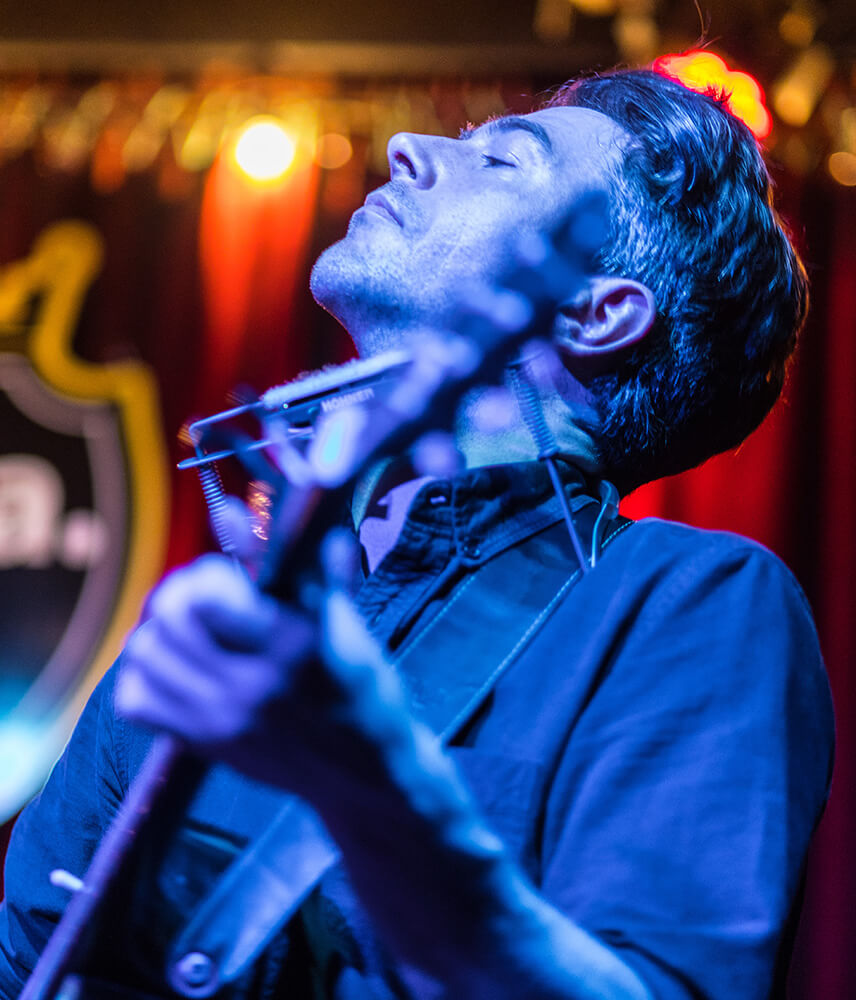
A City of Sounds
Considered by most to be the birthplace of jazz, New Orleans has a musical culture unlike any other city in America. The legacy of Louis Armstrong, Louis Prima, and Fats Domino lives on with a thriving jazz, blues, and brass scene. World-class music can be found at bars, restaurants, music venues, and on city corners throughout Greater New Orleans.
Large national acts frequently sell out shows at the Smoothie King Center. Bourbon Street offers party music for the young and young-at-heart, while those with more alternative tastes can check out venues like the House of Blues and One Eyed Jacks. Punk, heavy metal, and hard rock shows can often be found in the Marigny along the St. Claude Arts Corridor, while jazz and brass bands thrive on Frenchmen Street. Ruby’s Roadhouse in Mandeville is one of the Northshore’s oldest blues venues and a popular regional haunt for those looking to get off the beaten path for great live entertainment.
Festivals and concerts throughout the year
Sometimes it feels like live music can be heard on any given corner in New Orleans. And while that seems like an exaggeration, it’s not far from the truth.
The reality is you can find live music at a festival or fair on just about any weekend in at least one of our parishes. In fact, some of the biggest festivals, such as Jazz Fest, French Quarter Fest, and Voodoo Fest, are centered around music.
Outside of events, bands regularly play at some of the hundreds of music venues found in the region. On any given night, it’s likely you can find a local band playing their “residency night” inside a small bar such as Le Bon Temps Rouler, Blue Nile, or Maple Leaf Bar while a national touring act is performing for thousands of fans in a larger venue such as the Civic Theater, Orpheum, Smoothie King Center, or the Mercedes-Benz Superdome.
Our musical roots run deep
In the 1940s, musicians from New Orleans started to develop and push emerging sounds from around the world.
Working with producer Dave Bartholomew, musicians such as Fats Domino embraced the rhythm and blues movement that emerged from the jazz sound. Legendary New Orleans artists such as Smiley Lewis, Lloyd Price, Earl King, and more dominated the airwaves and embodied a distinctive “Big Beat” sound.
Musician, songwriter, arranger, and record producer Allen Toussaint worked for decades to shape songs for local and global artists alike. His most notable influences can be heard on songs such as “Mother-in-Law,” “Working in the Coal Mine,” “Right Place, Wrong Time,” and “Lady Marmalade.”
One of Toussaint’s dearest friends was Dr. John, who started his career as a session musician in the 1950s before a decades-long run of creating a unique blend of jazz, blues, and psychedelic rock that he was able to play alongside legendary musicians such as Bob Dylan, The Rolling Stones, James Taylor, the Black Keys, and many more.
In the 1960s, funk music was the style of choice for gifted musicians, and The Meters became masters of the sound. Though their career was short, their influence was widespread and led to the creation of the Neville Brothers. This era also featured a series of female singers and musicians such as Irma Thomas, Barbara Lynn, and the Dixie Cups.
From Louis Armstrong to Big Freedia
Many people might not know that New Orleans has its own songs. Depending on the time of year, speakers around the area will blare tunes created for Mardi Gras, the New Orleans Saints, holidays, or just in appreciation of the city itself. Not surprisingly, the city has created not only songs, but entire genres of music.
The most widely known style of music born in New Orleans is jazz. It originated in the late 19th and early 20th centuries in the African-American communities of the area, and developed from musical roots in blues and ragtime. Louis Armstrong helped popularize this style of music, which has grown considerably over the years and taken on numerous forms including avant-garde, Latin jazz, jazz fusion, Dixieland, bebop, and the brass style that some New Orleans bands heavily embrace.
From the 1990s to today, New Orleans has been an innovator in developing its own style of hip-hop, too. As the home of No Limit Records and Cash Money Records, this area helped bring Lil Wayne, Master P, Mystikal, Juvenile, Mannie Fresh, and more to global audiences.
More recently, New Orleans has created bounce music, which includes call-and-response-style party and Mardi Gras Indian chants and dance call-outs from artists such as DJ Jubilee, Partners-N-Crime, Magnolia Shorty, and Big Freedia.
Rankings





Find Your Dream Job
From tech to healthcare to manufacturing and beyond, explore the many career opportunities awaiting you in New Orleans.

Neighborhood Finder
However you live, you can live here. Discover which of New Orleans’s diverse neighborhoods best fits your preferences.